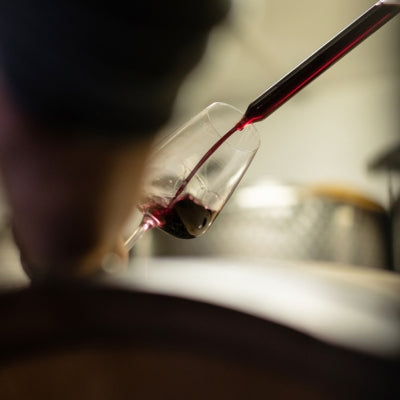
Sulfites in wine: Part II
In Part I of our series on wine and sulfites, Westgarth Wines wine expert Maurizio Broggi explained why this chemical is essential for fine winemaking. In Part II, he looks at the cellar process, health rules, and natural wines.
Sulfur dioxide and the winemaking process
Sulfur dioxide is introduced into wine at various stages, often beginning immediately after the grapes are harvested.
It may be added during crushing, after malolactic fermentation, and at bottling. It is usually not added during fermentation to avoid compromising yeast activity.
Applying larger, well-timed doses at key stages is generally more effective than multiple smaller additions. Interestingly, small quantities – typically 10 mg/liter or less – are also naturally produced by yeasts during alcoholic fermentation, which makes it nearly impossible to produce a wine completely free of sulfites.
What are sulfite health regulations?
Health and regulatory concerns surrounding sulfites have grown in recent decades, especially due to sensitivity in some individuals. While the levels used in winemaking are far below toxic thresholds, a small percentage of the population — particularly individuals with asthma — may react to even low concentrations. Symptoms can include throat irritation and even respiratory problems.
In response, regulations around the world have mandated disclosure on wine labels. Wines that contain more than 10 mg/liter of sulfur dioxide must be labeled with a “contains sulfites” warning.
Legal limits of sulfur dioxide vary by region. In the European Union, dry red wines may contain up to 150 mg/liter of sulfur dioxide, while dry whites and rosés are allowed up to 200 mg/liter. Sweet wines can go as high as 400 mg/liter, and sparkling wines may contain up to 235 mg/liter.
In the United States, the maximum permitted level across all wine types is 350 mg/liter. Organic wines face stricter regulations: in the EU, lower limits are enforced, and in the U.S., any wine labeled as organic cannot contain added sulfur dioxide at all.
Despite these permitted levels, quality-focused winemakers often aim to stay well below the legal thresholds because excessive sulfites can mask and reduce a wine’s fruit character and its expression of origin and terroir. Furthermore, excessive sulfur dioxide may cause a harsh, pungent, unpleasant smell along with a bitter, metallic finish, reducing the overall quality of the wine.
Is sulfite in red and white wines the same?
Red wines typically require less sulfite than white wines, as they benefit from the protective effects of phenolic compounds extracted from the skins, such as tannins. These compounds offer a natural antioxidant buffer, allowing for lower sulfur dioxide additions.
In contrast, white wines, which lack such phenolic protection, are more susceptible to oxidation, and therefore often receive higher doses of sulfur dioxide.
Natural winemaking and sulfites
The trend toward natural and minimal-intervention winemaking has led some producers to avoid adding sulfites entirely. Proponents of wine without added sulfites (as in natural wines) suggest that these wines show more energy, brighter fruit character, and a purer expression of terroir and origin than conventional wines with added sulfites.
However, consistency seems more difficult to achieve without the addition of sulfur dioxide. While such wines can express unique and compelling character, they may be more fragile and prone to bottle variation and faults.
Successful production of wine without added sulfites requires high-quality, healthy grapes, meticulous handling, careful management of oxygen exposure, sterile equipment, temperature control, and stricter hygiene protocols.
Sulfur dioxide remains one of the most important tools in the winemaker’s arsenal. When used carefully, it protects against spoilage and oxidation while preserving the sensory qualities of wine. As with many interventions in winemaking, the key lies in balance: using just enough to ensure stability and longevity, without compromising fruit expression, wine character, or safety.
Wine expert, Maurizio Broggi is from Milan. With a background in engineering, he discovered his passion for wine at a sommelier training course in Italy and has since built an international career as a wine educator, ambassador, and consultant, working across his homeland, China, and the United States. He is a WSET Levels 1–4 instructor, holds the WSET Level 4 Diploma, and is pursuing the prestigious Master of Wine title. Maurizio has also completed winemaking studies at UC Davis and has been a judge at the Decanter World Wine Awards.
Want to read more? Take a look at some of our other blogs:
Also in News

Hospices de Beaune auction 2025: Inside the world’s oldest charity wine auction
One of the most exciting events in the international wine calendar


